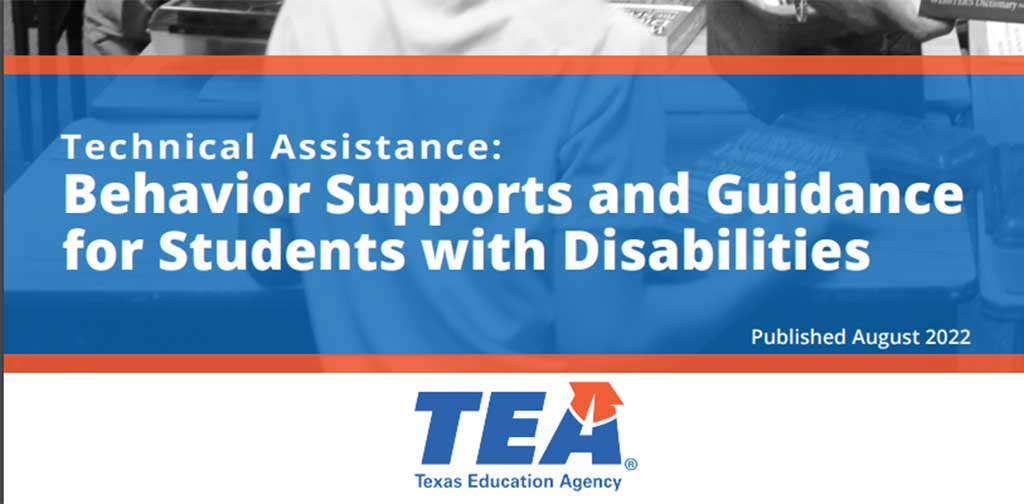According to the Texas Education Agency’s (TEA) Accessible Content from the 2016 Nonpublic Day and Residential PowerPoint and document, “A nonpublic school placement is the placement of a student by a district, at district cost, into a private setting to receive special education and related services that the district is unable to provide for the student while still providing a free appropriate public education (FAPE).”
Facts about Nonpublic School Placements
TEA must approve the educational program of all sites that districts choose to place students to ensure that each meet both federal and state special education program requirements. The legal responsibility for providing appropriate education services to a student remains with the sending district. All service providers at the nonpublic school must be appropriately certified and/or licensed. Before entering into a contract with a facility, an ARD committee must be convened to develop an IEP for the student. A representative of the nonpublic school must participate in the meeting.
Noneducational Community-Based Support Services
Districts should coordinate with the Local Intellectual Disability Authority, Mental Health Authority, Community Resource Group, or group of people knowledgeable about the student to determine that whether noneducational support services are available that would enable the student to remain in or return to the community. Texas Education Code §29.013
Nonpublic Facilities
Facilities that provide educational services must have their educational programs approved for contracting purposes by the commissioner of education. 19 TAC 89.61(c)
2016-2017 Nonpublic Schools for Students with Disabilities Approved for Contracting Purposes
The district shall make an initial and an annual on-site visit to verify that the facility can, and will, provide the services listed in the student’s IEP which the facility has agreed to provide. 19 TAC 89.61(a)(4)(E)
ARD Meeting
Before the district places a student in, or refers a student to, a facility, the district shall conduct an ARD committee meeting in accordance with state and federal requirements. 19 TAC 89.61(a)(4)
An ARD meeting must be held to:
- Consider all options and lesser restrictive placements.
- List the services which the district is unable to provide and which the facility will provide.
- Document the appropriateness of the facility for the student
- Establish, in writing, criteria, and estimated timelines for the student’s return to the district (reintegration plan). If it is not an initial placement, the committee should review and document the student’s progress on the goals/objectives for return to the district.
- Verify/document
- nonpublic day/residential placement is needed
- the educational program provided at the facility is appropriate
- the placement is the least restrictive environment
- IEP must contain specific goals/objectives addressing the services (academic, related services, behavior therapy, etc.) for which funding is requested.
Nonpublic Application Submission
The school district then submits the application for state funding to TEA from Nonpublic/High Cost Funds. Funding is available for nonpublic school day programs and residential programs.
State funding for day programs is 1.7 X the district’s state disbursement. For residential programs, the district must spend any available funds, the district must expend its local tax share per average daily attendance, and 25% of its IDEA-B formula tentative entitlement for related services and residential costs.”
Application Approval
If the application is approved, TEA pays the balance of the residential placement costs.
The application shall not be approved if the application indicates that the:
- placement is due primarily to the student’s medical problems
- placement is due primarily to problems in the student’s home
- district does not have a plan, including timelines and criteria, for the student’s return to the local school program
- district did not attempt to implement lesser restrictive placements prior to residential placement (except in emergency situations as documented by the ARD committee)
- placement is not cost effective when compared with other alternative placements
- residential facility provides unfundable/unapprovable services
19 TAC 89.61(b)(1)
Resources
- Nonpublic Day and Residential Guidance
- Nonpublic School Monitoring and Guidance Resources for Special Education
Texas High Cost Fund
TEA is required to set aside IDEA-B funds to provide schools with funding to address the financial impact of a high-need child with disabilities on their budget. When the costs to provide a FAPE to a child with a disability exceed three times the average per-pupil expenditure (APPE), a district may request HCF. Only costs identified in the child’s IEP and associated with providing direct special education and related services to the child are considered in determining whether a child is a high-need child.
There are other eligibility criteria that a district must meet to be able to request and receive these funds. Information on this process is available on the TEA website >



